Good Digital Public Infrastructure
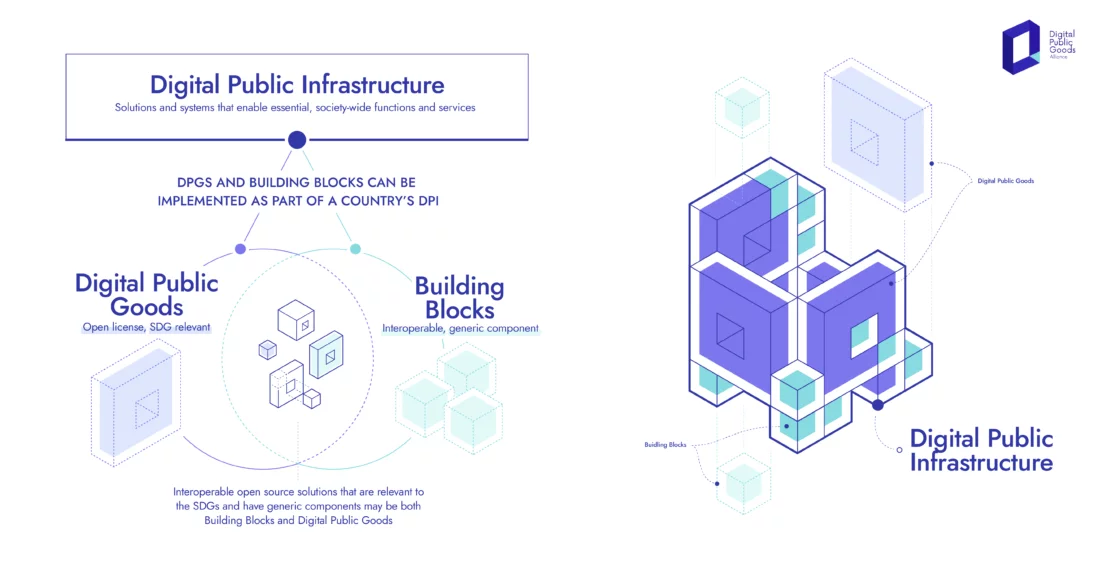
- 08 Sep 2024
Good digital public infrastructure (DPI) integrates technology with societal needs, ensuring that it is secure, scalable, and inclusive.
India’s achievement of over 80% financial inclusion in just six years has drawn international praise, particularly as a model for the Global South. This accomplishment underscores India’s success in achieving both digital and financial inclusion for over a billion people. Consequently, the G20 summit in New Delhi in 2023 highlighted the critical role of digital public infrastructure.
In response, India’s G20 task force has released a comprehensive report outlining a global strategy for DPI development. This positions India to support other nations in achieving digital sovereignty, financial inclusion, and self-reliance.
The evolving digital landscape is marked by a variety of stakeholders—including private enterprises, government bodies, non-profits, and think tanks—each working to advance their DPI solutions. This raises two key questions: How can we identify genuine and reliable DPIs from the plethora available? And what differentiates a “good DPI” from a “bad DPI”?
Identifying effective DPI involves assessing how well technology meets societal needs while ensuring security, scalability, and inclusivity. Authenticity and adherence to core principles are essential for evaluating DPIs.
The Citizen Stack Model
Citizen Stack, built upon the proven success of India Stack, emerges as a trusted ecosystem in digital infrastructure. India Stack, a robust digital platform, has demonstrated its effectiveness and security on a vast scale, serving over a billion citizens. This strong foundation enhances Citizen Stack’s credibility and reliability. Unlike DPI manufacturers, Citizen Stack functions as a regulatory body or auditor, certifying and authenticating DPIs to ensure they meet high standards of quality and security.
Citizen Stack’s approach is comprehensive, focusing on security, scalability, and inclusivity. The DPI platforms approved by Citizen Stack are designed to meet the diverse needs of large populations while maintaining stringent security measures to protect user data and privacy. As an auditor, Citizen Stack ensures that certified DPIs are dependable, secure, and beneficial to the public.
In an era of abundant digital solutions and promises, distinguishing genuinely reliable platforms is essential. Citizen Stack offers assurance as a gold standard for DPI solutions.
Guiding Principles of a “Good DPI”
Citizen Stack has established five core principles—referred to as sutras—that define a good DPI:
- Maintain Citizen Relationships: Ensure that digital infrastructure supports a fair relationship between citizens, the market, and the state, free from undue influence.
- Protect Empowerment and Privacy: Implement consent-based data sharing systems that prioritize individual empowerment and privacy.
- Prevent Monopolistic Lock-In: Ensure interoperability to avoid citizens being restricted by monopolistic entities.
- Combine Techno-Legal Regulation: Integrate technology with legal frameworks to govern ethical tech use, ensuring innovation while safeguarding security and societal rights.
- Foster Public-Private Innovation: Encourage collaboration between public and private sectors, while avoiding corporate dominance. The focus should be on public good rather than corporate monopolies, and technology should prevent exploitation by state or corporate actors.
Barakah Nuclear Energy Plant
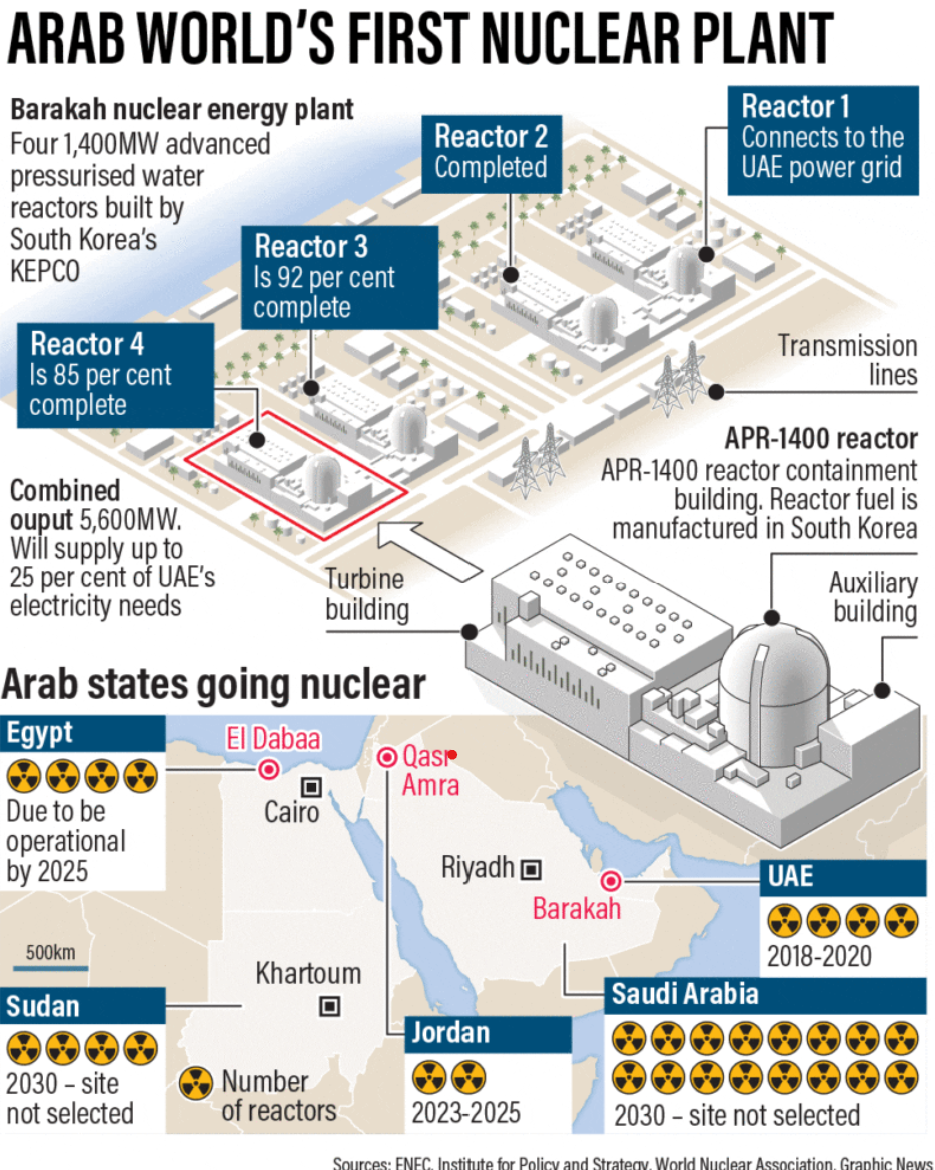
- 08 Sep 2024
Location: Situated in Al Dhafra, Emirate of Abu Dhabi.
Specifications:
- Reactor Count: Four nuclear reactors.
- Annual Output: 40 terawatt-hours (TWh) of electricity.
Objective and Significance:
- Energy Diversification: The plant is a key component of the UAE’s energy diversification efforts, providing clean and efficient power.
- Environmental Impact: It is projected to reduce carbon emissions by up to 22 million tons annually, equivalent to removing 4.8 million cars from the roads.
International Nuclear Energy Agreements
Purpose: Nuclear energy agreements are bilateral or multilateral treaties focused on the peaceful use of nuclear energy. They facilitate international cooperation in areas such as technology transfer, fuel supply, safety standards, and non-proliferation.
India’s Nuclear Energy Agreements:
- General Overview: India has established civil nuclear cooperation agreements with various countries including France, the United States, Russia, Namibia, Canada, Argentina, Kazakhstan, South Korea, Australia, Sri Lanka, and the United Kingdom.
Key Agreements:
- India-Russia: A longstanding partnership since the Cold War, with Russia significantly contributing to the construction of the Kudankulam Nuclear Power Plant in Tamil Nadu.
- India-US Civil Nuclear Agreement (2008): Known as the 123 Agreement, it marked India’s entry into the global nuclear market despite its non-signatory status to the Nuclear Non-Proliferation Treaty (NPT). This agreement enabled India to engage in nuclear trade with the US and other Nuclear Suppliers Group (NSG) members.
- India-France Civil Nuclear Agreement (2008): This agreement allows France to supply nuclear technology and fuel to India, including involvement in the proposed Jaitapur Nuclear Power Project in Maharashtra.
- India-Canada Nuclear Cooperation Agreement (2010): This historic deal marked a return to cooperation after a hiatus following Canada's sanctions in 1974, allowing uranium supply for India’s civilian reactors.
- India-Japan Nuclear Agreement (2016): This agreement facilitates the export of nuclear technology from Japan to India, reflecting Japan’s confidence in India's non-proliferation commitments.
- India-Kazakhstan: Agreements with Kazakhstan for uranium supply, given Kazakhstan’s status as a major uranium producer.
- India-Australia Civil Nuclear Cooperation Agreement: Permits Australia to export uranium for India’s civilian nuclear program. Notably, Australia typically exports uranium only to NPT signatories.
- India-United Kingdom Nuclear Agreement (2015): This agreement promotes collaboration on nuclear technology and research between India and the UK.
- India-UAE Civil Nuclear Energy Cooperation: Recently, India and the United Arab Emirates (UAE) formalized their collaboration in civil nuclear energy through an MoU.
National Initiative for Developing and Harnessing innovations (NIDHI) program
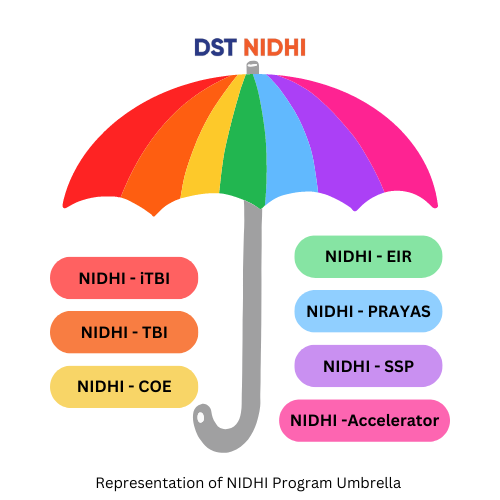
- 08 Sep 2024
- NIDHI is an umbrella programme conceived and developed by the Technology Translation and Innovation (TTI) Division/ National Science and Technology Entrepreneurship Development Board, of Department of Science & Technology, Government of India, for nurturing ideas and innovations (knowledge-based and technology-driven) into successful startups.
- The NIDHI programme works in line with the current national priorities and goals and its focus would be to build an innovation driven entrepreneurial ecosystem with an objective of national development through wealth and job creation.
- NIDHI aims to nurture Startups through scouting, supporting and scaling of innovations by providing them with a series of programme components tailored towards the critical initial phases of the Startup journey.
- The key stakeholders of NIDHI include Science & Technology based entrepreneurs, Startup Incubators, academic and R&D institutions, Startup mentors, financial institutions, angel investors, venture capitalists, relevant government & industry bodies and associations.
- NIDHI has been developed to suit the national aspirations and on the basis of DST’s three-decade long experience in propelling Startup Incubation centres and Science & Technology based entrepreneurs.
- The key components of NIDHI are :-
- NIDHI PRAYAS: Promotion and Acceleration of Young and Aspiring technology entrepreneurs – Support from Idea to Prototype
- NIDHI – EIR: Entrepreneur In Residence – Support system to reduce risk for entrepreneurs.
- NIDHI – TBI : Technology Business Incubator (NIDHI-TBI) – Converting Innovations to start-ups.
- NIDHI – iTBI : Inclusive- Technology Business Incubator – A new variant of the NIDHI-TBI launched in 2022-’23.
- NIDHI – Accelerator : Startup Acceleration Programme – Fast tracking a start-up through focused intervention.
- NIDHI – SSS : Seed Support System – Providing early stage investment
- NIDHI – COE : Centres of Excellence – Globally competitive facilities to help startups go global.
- While NSTEDB is the funding agency, the NIDHI programmes are implemented through Technology Business Incubators (TBIs) available around the country.
- Note: All the NIDHI-Startup funds and offerings are disbursed to eligible startups only through eligible NSTEDB associated incubators across India
Vishvasya-Blockchain Technology Stack
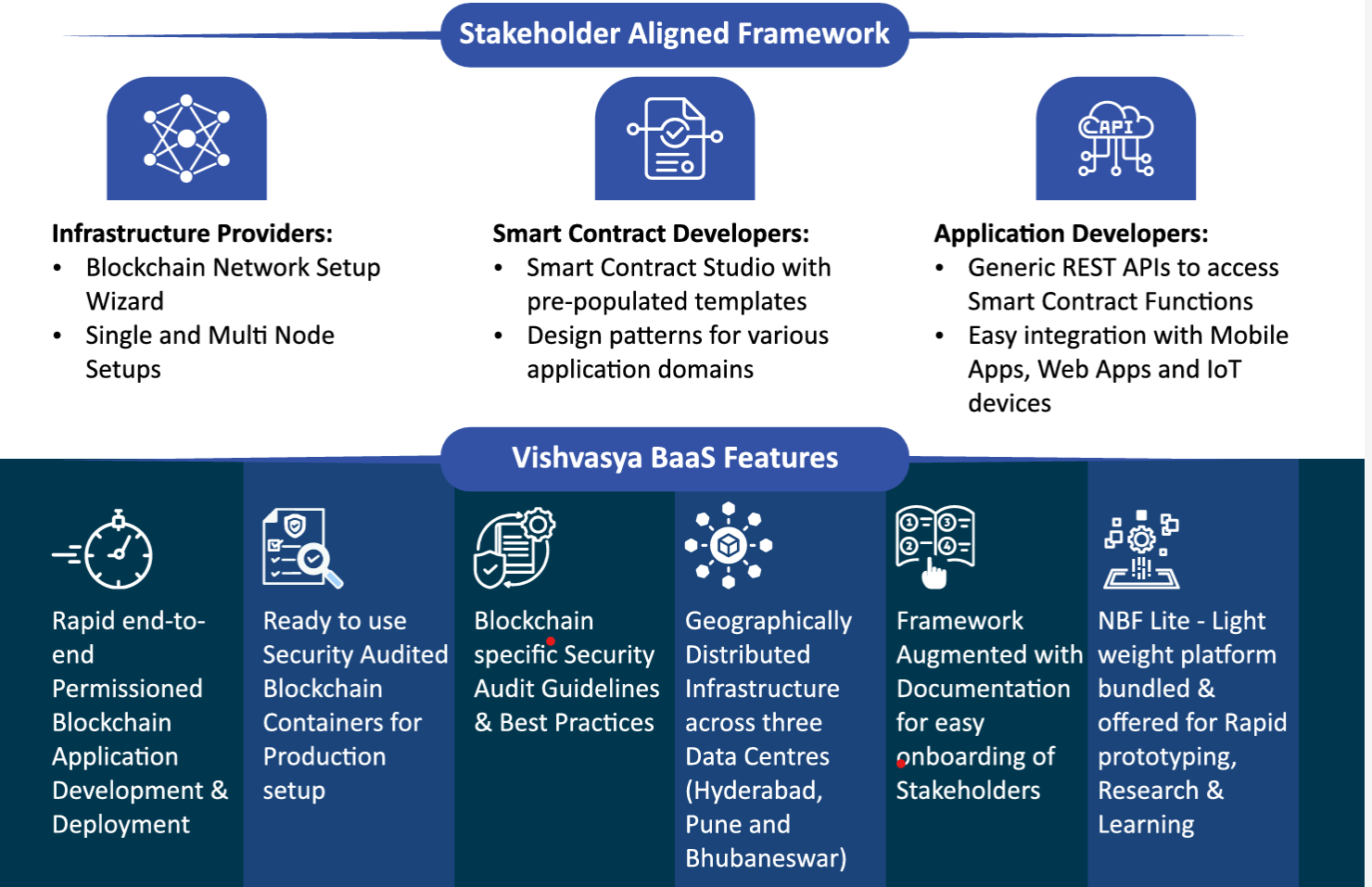
- 08 Sep 2024
The Government of India has recently introduced several significant initiatives to advance blockchain technology and its applications.
1. Vishvasya-Blockchain Technology Stack
- Purpose: The Vishvasya-Blockchain Technology Stack is designed to offer Blockchain-as-a-Service (BaaS) with a geographically distributed infrastructure. This stack supports various permissioned blockchain-based applications, enhancing the security and efficiency of digital services.
2. NBFLite
- Description: NBFLite is a lightweight blockchain platform intended as a sandbox for startups and academic institutions. It allows for rapid prototyping, research, and capacity building, fostering innovation in blockchain applications.
3. Praamaanik
- Purpose: Praamaanik is a blockchain-enabled solution for verifying the origin of mobile apps. This ensures that users can trust the source of their applications, contributing to enhanced digital security.
4. National Blockchain Portal
- Function: The National Blockchain Portal serves as a central hub for accessing blockchain technologies and services developed under the National Blockchain Framework (NBF).
5. National Blockchain Framework (NBF)
- Overview: The NBF is designed to promote secure, transparent, and trusted digital service delivery. It includes:
- Distributed Infrastructure: Hosted across NIC Data Centers in Bhubaneswar, Pune, and Hyderabad.
- Core Framework Functionality: Provides the backbone for various blockchain applications.
- Smart Contracts & API Gateway: Facilitates interactions with blockchain-based systems.
- Security, Privacy & Interoperability: Ensures robust security and privacy while supporting integration with other systems.
- Applications Development: Supports the creation and deployment of blockchain applications.
- Goals: The NBF aims to address challenges such as the need for skilled manpower, vendor lock-in, and issues related to security, interoperability, and performance.
6. Strategic Objectives
- Digital Trust and Service Delivery: The framework is part of the government's effort to create trusted digital platforms and improve service delivery to citizens.
- Global Leadership: The initiative seeks to position India as a global leader in blockchain technology, driving economic growth, social development, and digital empowerment.
- Governance Transformation: Blockchain technology is envisioned to enhance transparency, efficiency, and accountability in public services.
7. Collaborative Efforts
- Development: The technologies have been developed through the collaborative efforts of organizations including C-DAC, NIC, IDRBT Hyderabad, IIT Hyderabad, IIIT Hyderabad, and SETS Chennai, with support from MeitY.
- Research and Patents: The NBF project has already resulted in several patents and research publications, reflecting its innovative and research-driven approach.
8. Future Directions
- Scaling Applications: There is an emphasis on scaling blockchain applications across various states and departments.
- Exploring New Innovations: Efforts will continue to onboard new applications and innovative components on the NBF stack.
Health Ministry approves new treatment regimen for multidrug-resistant TB
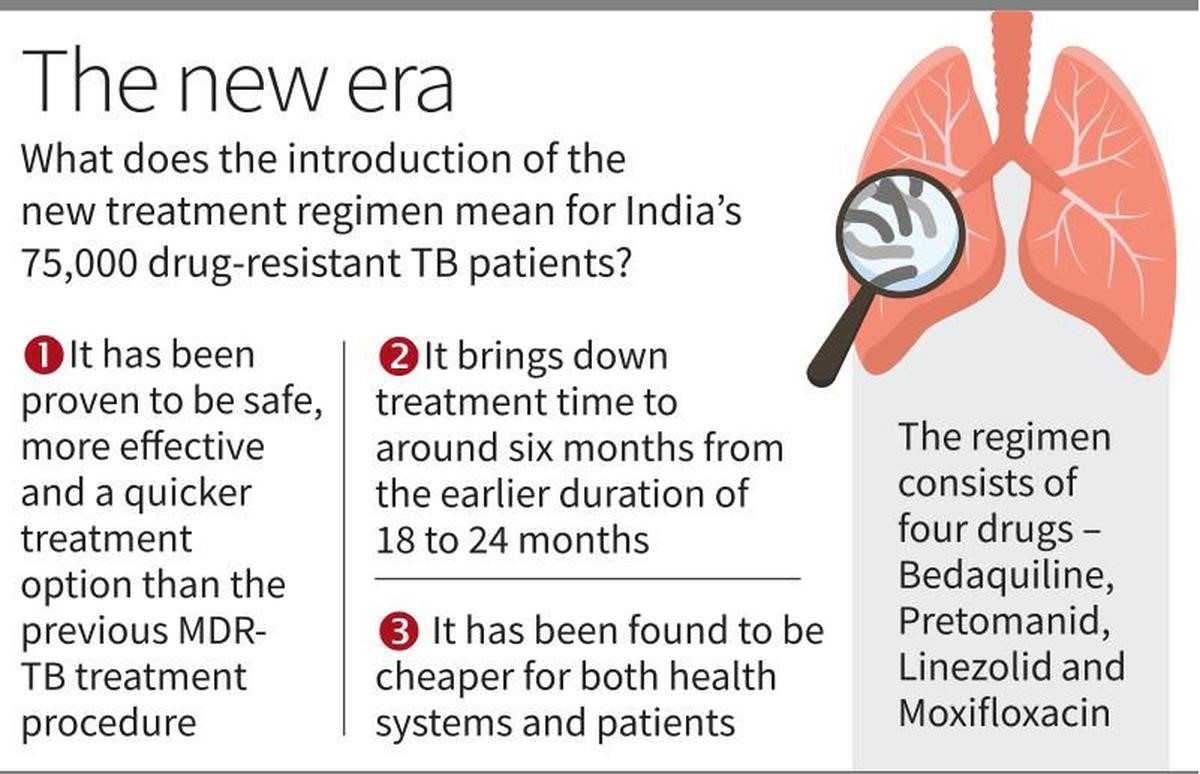
- 08 Sep 2024
The recent approval of the BPaLM regimen by India's Union Health Ministry marks a significant advancement in the fight against multidrug-resistant tuberculosis (MDR-TB). This new treatment combines four drugs—Bedaquiline, Pretomanid, Linezolid, and Moxifloxacin—and offers several benefits over traditional treatments.
Key Points:
- Enhanced Effectiveness: The BPaLM regimen has demonstrated a higher efficacy in treating MDR-TB compared to previous methods.
- Shorter Treatment Duration: Unlike traditional treatments, which can take up to 20 months and often come with severe side effects, the BPaLM regimen shortens the treatment period to just six months.
- Improved Safety: The new regimen is noted for its safety profile, potentially reducing the risk of adverse effects compared to older treatments.
- Cost Savings: By shortening the treatment duration and improving outcomes, the BPaLM regimen is expected to lower overall treatment costs.
- Integration into National TB Elimination Programme: This regimen will be incorporated into India’s National TB Elimination Programme, aligning with the country’s ambitious goal to eliminate TB by 2025, which is five years ahead of the global target.
- Infrastructure and Testing Facilities: India boasts a comprehensive TB laboratory network, including 7,767 rapid molecular testing facilities and 87 culture and drug susceptibility testing laboratories, which will support the implementation of the new regimen.
This development represents a significant step forward in TB care and aligns with broader global efforts to combat drug-resistant TB more effectively.
